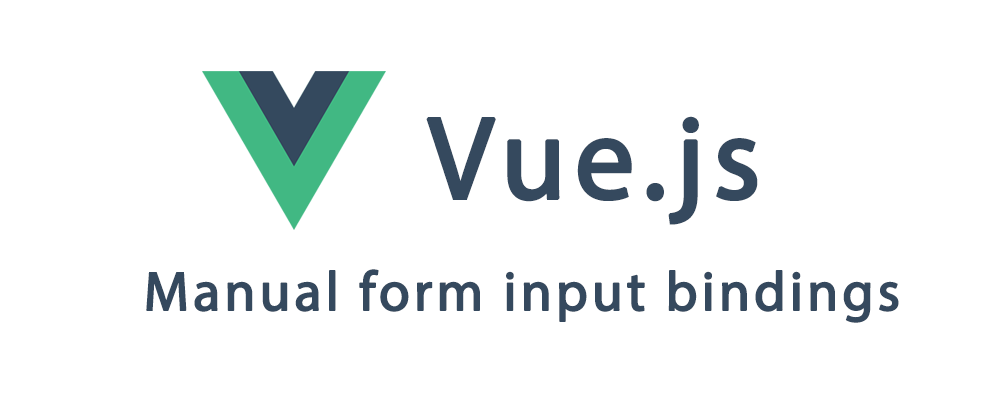When creating forms with Vue.js most of the times we' re using v-model for our form input bindings. v-model makes it super easy to sync the data model with our form fields' values and vice versa.
It's the so called two-way binding.
There can be times though that we need more control on the field's value binding and this is when manual binding comes in.
v-model under the hood
Vue.js documentation gives us a hint on how v-model works under the hood. It wire's up value bindings and change event listeners to the field element that is used on.
For example an <input v-model="text"> translates to
<input
:value="text"
@input="event => text = event.target.value"
>
Here are the different DOM properties and event pairs for the basic form elements that we can leverage in order to recreate the v-model two-way binding manually using v-bind (:) and v-on ( @):
| Element | Property | Event |
|---|---|---|
| input | :value | @input |
| textarea | :value | @input |
| checkbox | :checked | @change |
| radio | :checked | @change |
| select | :value | @change |
Let's check how that looks in actual code
Manual binding examples
Although an example for two-way form input bindings using v-model exists in the Vue.js docs site, there's no example on how to create the same bindings manually.
Let's see how we can create manual bindings for checkbox and radio as these are the most tricky to get right.
At the end of this article you will find a CodeSandbox that recreates the Vue.js Form Bindings example using manual bindings. It also includes examples for manual binding multi-checkbox and multi-select lists.
Checkbox
We usually bind a checkbox to a boolean value in our data model. Here's how to do that using manual binding.
<input
type="checkbox"
:checked="booleanValue"
@change="booleanValue = $event.target.checked"
/>
The key here is to v-bind the checked property and then assign the value back to the data model by reading the checkbox's checked attribute when the change event is fired.
$eventis a special variable that gives us access to the original DOM event inside the inline handler.
Radio
When binding radio buttons we'll most likely use a text variable to hold the selected value. Manual binding works like this: We bind the checked property to the result of an expression that evaluates to whether the current selected value corresponds to that specific radio button. We read the selected value of the radio using the change event.
Notice that we use
$event.target.valueas we need the actual text value.
<input
type="radio"
value="One"
:checked="textValue === 'One'"
@change="textValue = $event.target.value"
/>
<input
type="radio"
value="Two"
:checked="textValue === 'Two'"
@change="textValue = $event.target.value"
/>
More examples...
You can check the CodeSandbox here for detailed examples that also demonstrate how to bind multi-checkbox and multi-select lists.
It's good to know that manual binding works in exactly the same way in both Vue.js 2 and Vue.js 3.
Thanks for reading!







Top comments (0)